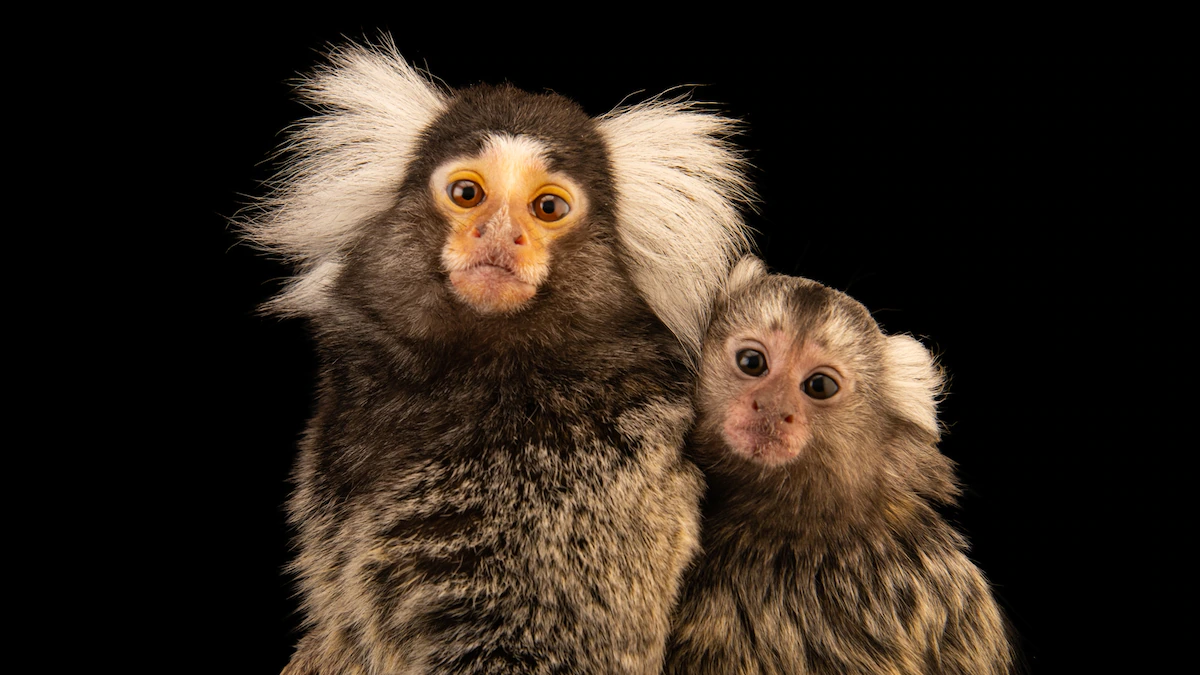- Animals
A new study of marmoset monkeys suggests human language development starts far earlier than previously thought.
Published August 26, 2022
6 min read
When a human baby is born, its first cry is a normal sign of good health. Having never taken a breath before, the baby signals its first inhalation and exhalation—in the form of a screech.
How do babies know to create a sound they’ve never made before? And is their first yelp truly the start of speech development?
As it turns out, human babies may be practicing how to cry long before they ever make a sound. That is, if they’re anything like marmosets, humans’ primate cousins.
In a recent study published in the journal Neuroscience, scientists used dozens of successive ultrasounds of pregnant common marmosets to show that their fetuses began making cry-like facial expressions nearly two months before birth.
The researchers were also able to separate these expressions from other mouth movements the babies performed in utero, and they matched them to the face shapes made after birth when the infants begin calling out to their parents. The expressions appeared in such consistent patterns and durations that researchers had strong confidence they were practice cries, even though the animals weren’t yet capable of making sounds.
Marmosets are among the smallest of monkey species, with adults weighing just 8 to 9 ounces, or about as much as a cup of sugar. There are more than 20 marmoset species, all native to South America. Despite being physically different from humans, they are primates, which means they are much more closely related to Homo sapiens and more instructive in understanding human development and behavior than more common research subjects like lab mice.
Back in the 1970s and 1980s, some ultrasound studies of pregnant women appeared to show babies making faces consistent with crying while still in the womb, says Daniel Takahashi, a co-author of the study and an animal behaviorist at the Brain Institute at the Federal University of Rio Grande do Norte in Brazil. But such findings were difficult to track over time, because of the inconvenience of conducting frequent and repeated ultrasounds on pregnant women.
“But marmosets are monkeys that we know vocalize a lot, and they share a lot of features with humans,” says Takahashi, who worked with the Princeton Neuroscience Institute while conducting the research.
For instance, both male and female parents raise their offspring together, and unlike other primates, marmoset babies are relatively helpless when they’re born, like human infants. (Read how marmoset dads go above and beyond.)
As to how all of this translates to humans, Takahashi says the central finding will help illuminate when speech development begins, and that studying pre-birth—rather than the moment of birth—may help identify speech or motor development problems earlier.
“There are a lot of things going on in the womb that might be relevant to what’s going on afterwards,” he says.
Marmosets like marshmallows
Before the researchers could submit the marmosets to an ultrasound wand, they first had to train the animals to sit still. While that may sound like a nearly impossible task for an animal that spends its days swinging feverishly around the rainforest canopy, the scientists had a trick up their sleeves.
“Marmosets like treats with high energy contents,” says Takahashi

